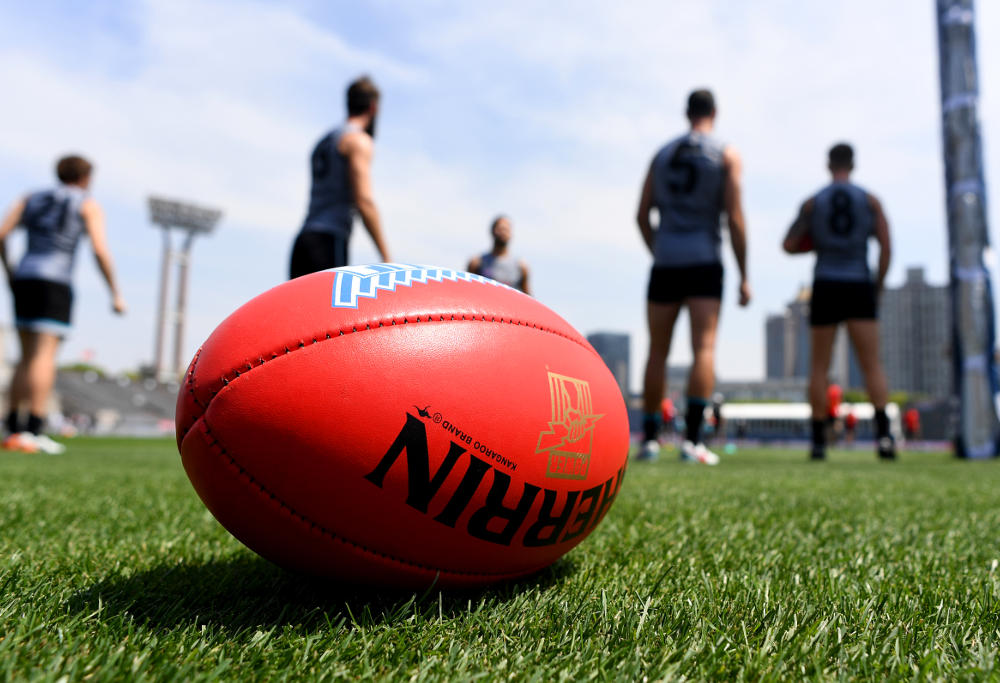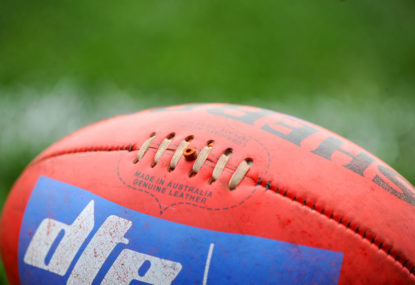Number 44 is not a number accustomed to football superstars.
Number 44 is a number that is usually given to footballers who barely make it onto a football list or a young draftee, who has to earn his stripes before being given a lower number.
But at Carlton and Geelong, 44 is a number worn with great pedigree.
Footballing wise, Justin Madden and Corey Enright were extreme opposites. In his own words, Madden was a lumbering ruckman who could not run, but could use his height and footballing smarts to forge a career.
Enright is 19 centimetres shorter than Madden and forged a career playing across halfback in a Geelong side deemed one of the best to ever grace the football field.
Despite the gulf in their abilities, Madden and Enright’s careers drew similar paths. Both players played 332 games wearing number 44 and both were held in high regard internally at their clubs, but did not receive much acclaim from the wider footballing public.
Madden began his career as a tall, skinny ruckman at Essendon in 1980. Recruited from Airport West, Madden was played predominately as a forward, because his brother Simon played in the ruck.
Realising his chances of dethroning his brother in the ruck were slim, Madden transferred to Carlton at the end of the 1982 season.
At first, Madden played in the forward pocket, but soon he was moved into the ruck and retained that mantle for the remainder of his career.
Madden was a cult figure to Carlton supports, due to his bubbly personality and awkward style of play.
Speaking on Fox Footy’s Open Mike, Madden said he always wanted to have fun on the football field and didn’t take the game too seriously.
The ruckman played with some of the greats of the game, including Greg Williams, Stephen Kernahan, Stephen Silvagni and Anthony Koutoufides. Because of the superstars he played with, Madden’s own success went unnoticed.
Madden won two premierships, two John Nicholls Medals (Carlton Best and Fairest award) and was an All-Australian, as well as finishing runner-up to Brad Hardie in the 1985 Brownlow Medal,
Similarly to Madden, Corey Enright had great success at his football club, without receiving the fame of his teammates.
Enright was drafted with pick 47 in the 1999 draft by the Geelong Football Club. Originally from Adelaide, Enright moved to the Cats with Joel Corey, Paul Chapman and Cameron Ling, who were all recruited in the same draft.

(AAP Image/Tracey Nearmy)
An extremely hard worker, who used his leg speed and strong pair of hands to his advantage, Enright won Geelong’s best first year player award in 2001.
2001 would be a pivotal year in the future of the Geelong Football Club, as they recruited Jimmy Bartel, James Kelly, Steve Johnson and Garry Ablett in the draft.
The names Bartel, Kelly, Johnson, Chapman, Corey and Ling all featured alongside Enright in the Cats best in the 2007 grand final. Enright finished the with 29 disposals and four marks, outstanding numbers for a Cats defender in the game they won by 119 points.
Enright would reach the pinnacle of his career in the following years, claiming six All-Australians (2008-11, 13, 16) and three premierships (2007, 09, 11).
Enright’s biggest achievement was winning two Carji Greeves Medals (Geelong Best and Fairest award) in premiership years.
On the night he claimed the 2011 Carji Greeves Medal, Geelong coach Chris Scott introduced Enright as “still the most underrated player in the competition”.
Enright finally started to receive recognition from the wider public later in his career. This was largely due to the departures of his more heralded teammates.
But like Madden, Enright would prefer to be an unheralded player in a successful team.
When asked by Mike Sheahan on Open Mike if there was ever the possibility of switching to a lower number, Madden said he was given the option, but preferred to remain in number 44, because it reminded him that he was not one of the best players in the team and needed to work hard to remain in the best 22.
Knowing the type of player Enright was, he too, probably preferred wearing number 44 to remind himself of all the hard work he completed to forge a successful career.































































































